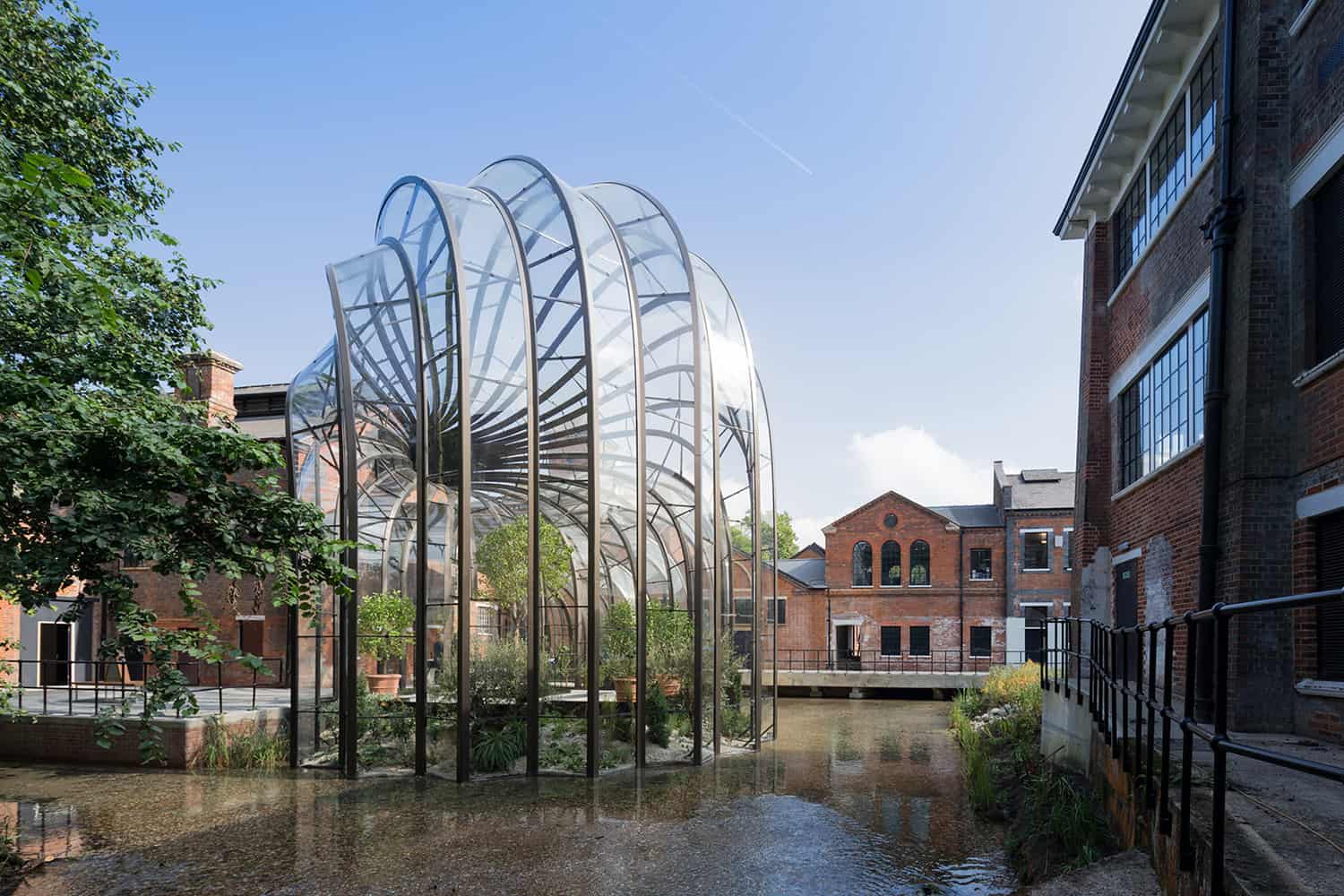It could be assumed that architectural engineering and architecture are identical fields. It's tough to distinguish between the two because they are constantly featured in different projects.
However, it’s important to note that although they’re part of the same plan, both branches aren’t dedicated to the same thing. A clear example can be seen by looking at the work of architects and comparing it to architectural engineering work.
Are you interested in pursuing a career in the field of architecture? Do you wonder what the difference is between architecture and architectural engineering? If so, we'll explain what architecture and architectural engineering are, how they are similar and different, and which one might suit you better. Let's get started!
Architecture and Architectural Engineering
To know more about the differences between architectural engineering and architecture, it’s necessary to define them. That said, it’s essential to extract their main characteristics.

When talking about architecture, you can refer to the art related to building construction, creation, and projection, considering specific and special elements. Architecture is capable of reflecting the values within society. It’s one of the most important elements at the moment of recognition.
Art vs Technique
Art
Architecture is considered an art. Much of its development focuses on the functionality of buildings and their appearance. This means that architecture is related to exterior and interior design. It looks to adjust these designs to the specific needs of the people who will inhabit the environment.
Over the years, architecture has become a point of reference for civilizations. Its evolution can be easily seen by comparing buildings from ancient times to the present day.
Over time, you can also see how the perception of architecture is changing and improving concerning its previous concepts, which is why designs are becoming more functional and sustainable.
Architectural Engineering
On the other hand, when talking about architectural engineering, other characteristic elements are part of this. Even when the objective of both terms is closely related, they aren’t the same.
Architectural engineering is related to one of the branches of engineering that focuses on including all the concepts of this and its fundamental principles to materialize the structures. It respects the architecture assigned to these structural systems and ensures the project has all the necessary components to succeed.
Those who are dedicated to architectural engineering have the function of creating a connection between engineers and architects. This means that this type of engineering is based on including and developing the technical aspects necessary for creating the works established by the architects.
The solutions offered by architectural engineering respect all the technical aspects necessary for the work to be habitable and not present any risk to those who must live or spend time there.
Both architectural engineering and architecture have emerged under a general concept: to create works and design buildings that serve civilization while each one maintains its well-defined functions.
Architectural Engineering vs. Architecture
Now that you are familiar with the concepts read below to learn the specific characteristics that distinguish them.

Characteristics of Architectural Engineering
This science focuses entirely on choosing and selecting the appropriate techniques for creating buildings. It checks the materials and quality of these to ensure they work. This type of engineering bases itself on a correct projection of the buildings so that they can meet the standards of durability and ensure the safety of all.
Architectural engineers have the job of building and giving life to the architect's design. Besides that, they ensure that each element complies with the technical requirements that make it a place fit for habitation.
They must be sure to incorporate important elements into their work. That's why it usually applies technology and sustainable methods for constructing homes and other small- and large-scale buildings.
Characteristics of Architecture
Architecture is specifically directed towards creating spaces and the distribution and design of these based on shapes. It, too, works on colors and textures while ensuring that the spaces are functional for construction.
It concentrates on the aesthetics of the spaces and that these are suitable for the stay of individuals. This includes the fluidity of their passage through the structure. The architect's main mission is to design the building completely, from the external part to the internal distribution. At the same time, they need to ensure certain aesthetic parameters.
They reflect social values and project-specific characteristics of the era in which people live today, being forced to consider the influence of current trends. The relationship between architecture and architectural engineering is close. Both look to create the most functional and beautiful spaces for everyone.
Similarities
- Architecture and architectural engineering are both related to the field of building design and construction.
- They both require creativity, problem-solving skills, and attention to detail.
- They both involve working with clients, contractors, engineers, and other professionals to deliver successful projects.
- Most states require both a bachelor's degree and a license to practice.
Differences
- Architecture and architectural engineering jobs have different focuses and scopes of work.
- An architect focuses on the form, function, and appearance of a building's exterior and interior components.
- Architectural engineering aspects are more concerned with the performance, efficiency, and safety of a building.
- Architecture is more artistic and subjective. Architectural engineering is more technical and objective.
- Architecture requires more courses in design, history, theory, and graphics.
- Architectural engineering requires more courses in math, science, engineering, and analysis.
Architects and Architectural Engineers: Career Paths

Let's explore the similarities and differences between these two professions, as well as the education, training, and licensure requirements for each.
To Become an Architect:
To qualify for the examination you must possess a bachelor’s or master’s degree in architecture from a recognized architecture school. A bachelors degree can take five years to complete while a master’s degree (M.Arch) can take from one to five years depending on the previous learning. You also have to undergo an internship or training program which takes three years and pass the Architect Registration Examination (ARE) to get a license. Licensing is mandatory for architects in all the states, and in some of the major architectural firms.
To Become an Architectural Engineer:
In order to practice architectural engineering you should complete a course in architectural engineering or any related field of study from a recognized institution. A bachelor’s degree is a four-year program which involves learning mathematics, science, engineering design, building construction, construction techniques, and computer aided design (CAD). Fundamentals of Engineering (FE) and (Practice of Engineering) PE exam results are also required when applying for license as an engineer. It is important to note that many states have set a precedence of only allowing architectural engineers with a license to work on public projects.
Architects and architectural engineers apply their imagination, mathematics, and science, and engineering knowledge and tools in designing safe, efficient, convenient, and aesthetically appealing structures. They work with the other members of the construction team and with the client and occupant to fulfill the construction project objectives. Becoming an architect or an architectural engineer is a rewarding profession that requires hard work, dedication, and passion.
Which Profession Should One Choose?

The choice between architecture and architectural engineering depends on your personal interests, skills, goals, and preferences. If you are more interested in creating the vision, concept, and design of a building, you might prefer architecture. If you are more interested in applying the principles of engineering to the building systems and components, you might prefer architectural engineering. If you are more interested in working on the structural aspects of a building, you might consider becoming a structural engineer or a civil engineer.
Both careers have their pros and cons. According to the U.S. Bureau of Labor Statistics (BLS), the median annual salary for architects was $82,320 in 2020. The median annual salary for architectural engineers was $88,860 in 2020. However, both careers also have high levels of stress, competition, responsibility, and liability. Both careers also require long hours of work, especially during deadlines.
Both careers also offer opportunities for growth and advancement. Both careers require continuing education to keep up with the latest trends, technologies, and regulations. Both careers also allow for specialization in different types of buildings or projects. For example, architects can specialize in residential, commercial, institutional, or industrial design. Architectural engineers can specialize in structural, mechanical, electrical, or environmental engineering.
Both careers also offer opportunities for internship and project management experience. Both careers require completing an internship program before obtaining a license. Both careers also involve managing projects from start to finish.
Ultimately, the choice between architecture and architectural engineering is up to you. You should do your own research on both fields and talk to professionals who work in them. You should also consider your own strengths, weaknesses, passions, and aspirations.
Conclusion
Even though sometimes one may seem to be more effective than the other, architects and engineers understand both the advantages and the disadvantages of both solutions. Remember one is aimed at establishing the technical and safety parameters of a building while the other is aimed at applying creativity in the design of the building.
Both work in architectural design to build architectural masterpieces that can be described as art. That is why there is no need to determine which one has the upper hand over the other.














